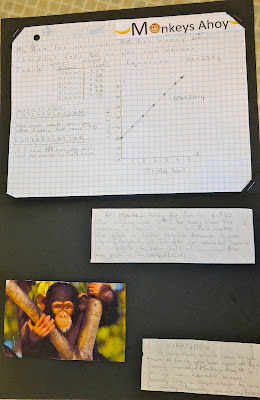 |
| Student Example: "Monkeys Ahoy" (video explanation) |
 |
| These students created their company assignment on the computer |
 |
| These students chose a non-computer option for their explanation |
Linear Relations Activity
Create Your Own Taxi or Phone Company!
Please complete all tasks from #1 to #10. As you complete a task, place a check mark in the box provided on the left-hand side.
Task #1) Create a name for your taxi or phone company.
Task #2) Select a “fee for service” that your company will charge for a certain amount of time (or kilometres for a taxi company). For example, a taxi company: $1 for every 2 km OR $1 for every 5 minutes
Task #3) Decide upon a flat fee (boarding rate for taxi company and set up charges for a phone company). For example, the flat fee is a small charge that is automatically billed to the customer upon stepping into the taxi. Often, the flat fee is about $2. Similarly, phone companies may have a minimum charge (connection fee) for the set up.
Task #4) Organize the data in a table of values. Identify the independent and dependent variable. Then write the equation that represents the rate of your company!
Task #5) Graph the linear relation using either the computer or graph paper. Make sure you label the axes.
Task#6) Write a brief summary to explain what your company will charge for the flat fee as well as the ongoing rate. Explain why it is a linear relation.
Task #7) Make up two questions that will accompany your table of values and graph for other students to answer. Answer the questions yourself as well but record them on the back of the page.
1) One question that students will use interpolation to answer (students will use the graph to estimate values between points that are ON your graph).
2) One question that students will use extrapolation to answer (students will use the graph to predict values that do NOT lie on the graph).
Task #8) Display your table, graph, written summary and two questions neatly on poster paper.
Task #9) Share your poster with the teacher and either a partner, small group, or the entire class.
Task #10) Create either a logo, slogan or picture for your company and add it to your poster.
This post courtesy of Melissa Berrisford
This post courtesy of Melissa Berrisford








